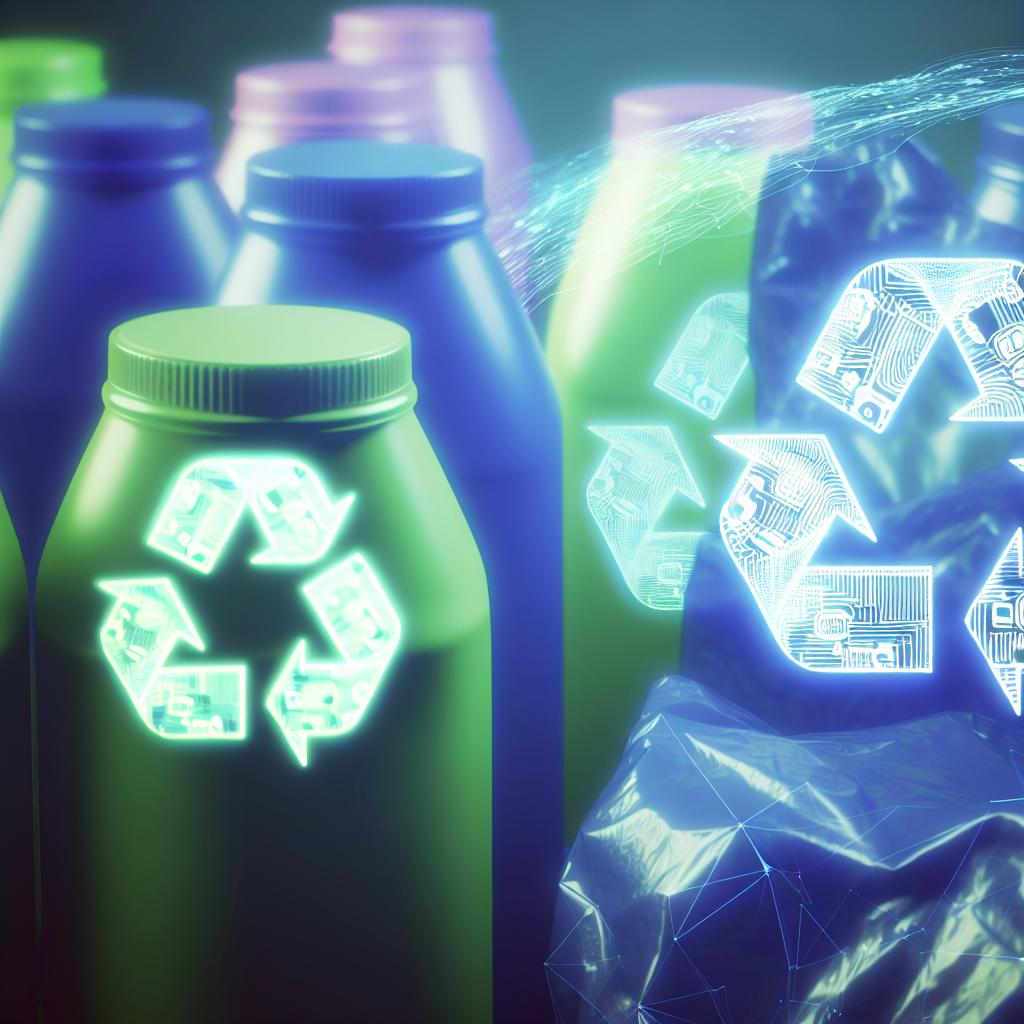The HolyGrail of Packaging: NEW Digital Watermarks for Smart Packaging Recycling
Published: April 15, 2024 Updated: October 1, 2024

Many of us are heartbroken when we see plastics in the ocean, especially when we learn that so much of it comes from countries like ours with the means to prevent it. We know that recycling is part of the answer but in its current state it isn’t enough. Of the many challenges is being able to identify what plastics are recyclable. If each plastic component in a package could be easily labeled for us to see, and for the sorting machines at the recycling plants to detect, we could increase the number of plastics that get recycled.
Efforts to improve recycling rates are already being developed in Europe, where the continent continues to lead the charge in creating a more sustainable and circular economy. One notable initiative worth mentioning is HolyGrail 2.0, which leverages digital watermarks intended to revolutionize packaging recycling.
Understanding Digital Watermarks
Imperceptible codes can be directly printed or embossed on plastic packaging. These codes, known as digital watermarks, contain crucial information about the packaging and can be detected by any high-resolution camera (like your phone).
To aid in the sorting process at home and at recycling facilities, digital watermarks can play a vital role in recycling as they are integrated into packaging labels during production without altering the packaging's design. When the packaging reaches a waste sorting facility, high-resolution cameras on sorting lines can be used to detect and decode these invisible watermarks. Digital watermark technology empowers consumers by enabling them to learn about their packaging so they're able to better sort waste using the information provided on the package.
The Project's Origin
Led by the AIM - European Brand Association and supported by the Alliance to End Plastic Waste, HolyGrail 2.0 is a demo project which brings together over 160 companies and organizations along the packaging value chain. Their collective goal is to evaluate if digital watermarks can improve sorting and recycling rates for packaging in the EU.
The project focuses on demonstrating the technical and economic feasibility for large-scale implementation. HolyGrail 1.0, the project's precursor, was initiated by the Ellen MacArthur Foundation, a key advocate for the circular economy. Following extensive research, digital watermarks emerged as the most promising technology to help with recycling and recycling education, gaining endorsement from the Foundation's stakeholders.
In this next phase, the project team plans to test digital watermark technology at semi-industrial and industrial scales. This entails deploying "prototype machines with high-resolution cameras to detect and decode information carried by digital watermarks" in sorting and recycling facilities. Factors like detection speed, accuracy, and efficiency in sorting food and non-food packaging will be crucial considerations for implementation.
Advancing Towards a Circular Economy
Projects like HolyGrail 2.0 pave the way for a circular economy where packaging materials flow seamlessly through recycling systems, reducing waste and maximizing resource efficiency. This initiative in Europe bridges the gap between theory and practice, transforming recycling into a precise and efficient process. Europe’s innovation with digitized processes and hopeful success with projects like this will be instrumental, particularly for Americans who seek further momentum to enhance recycling practices and infrastructure in the US.
*Information shared based on details from - endplasticwaste.org. For additional details on HolyGrail 2.0, please visit endplasticwaste.org.
